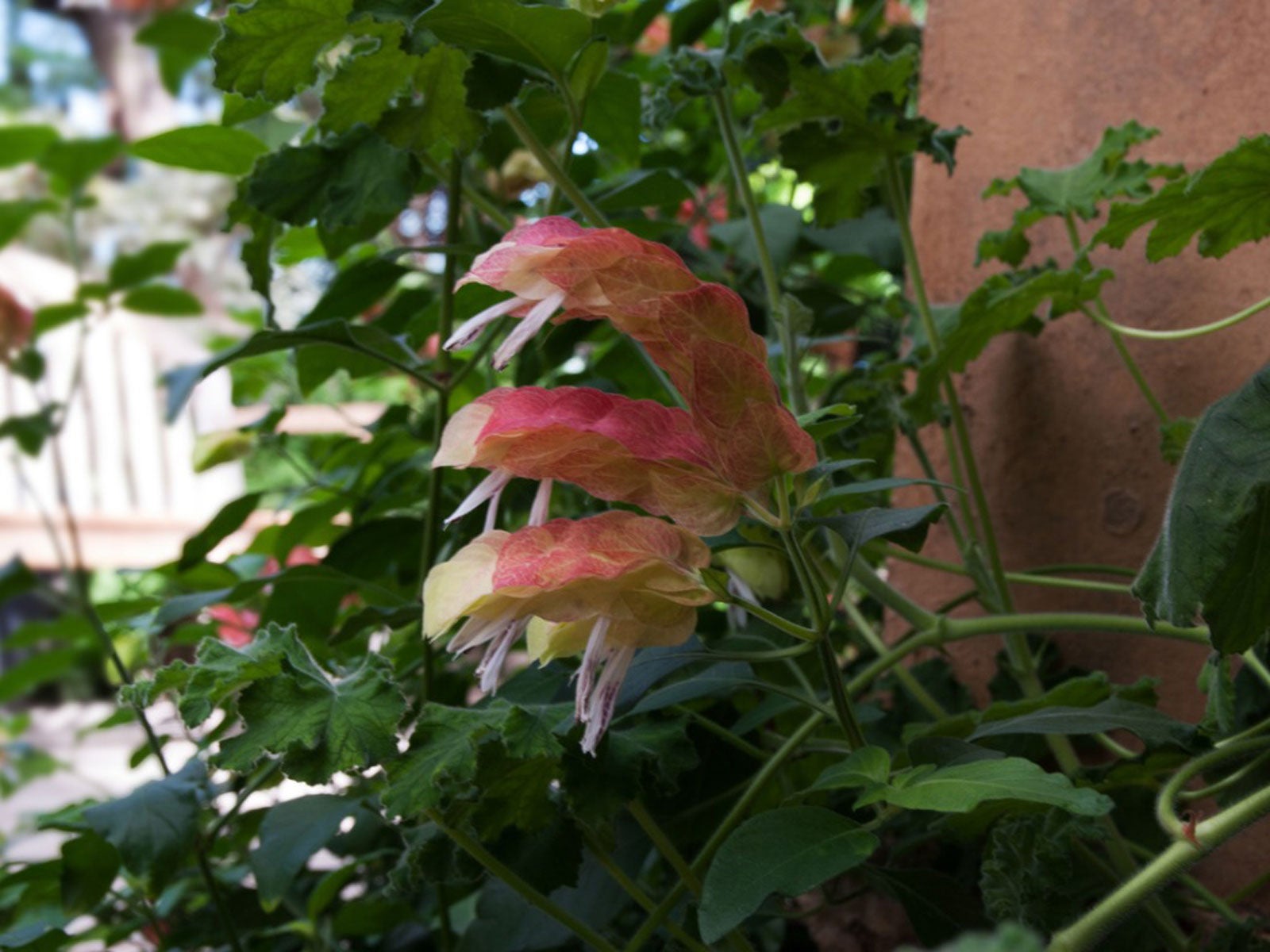How To Grow Shrimp Plants - Growing Information And Shrimp Plant Care


Before we talk about how to care for a shrimp plant, let's talk about what a shrimp plant is. Read on to learn more.
About Shrimp Plants
The Mexican shrimp plant, or Justicia brandegeeana, is a native of Guatemala, Honduras, and as its name implies, Mexico. It is an evergreen shrub that rarely grows more than 3 or 4 feet (1 m.) high, and about as wide. It thrives in the understory, a partially shaded area of tropical forests.
The plants grow in many stemmed clumps and in USDA plant hardiness zones 8-11 growing shrimp plants in gardens has become so prevalent, it has now naturalized in many areas. This is largely due to the ease of shrimp plant propagation.
The stems, which tend to become leggy with age and the sparse oval, green leaves, sometimes speckled with white, are not particularly attractive. But, the bracts, which hold tiny and insignificant white flowers, are definitely eye catching. Each stem is tipped by a spike of light pink to rusty red bracts that arch into a form that looks remarkably like shrimp.
There are cultivars of yellow and lime green as well. If you live in zone 8-11, growing shrimp plants can be a welcome addition to your landscape. They are easy to grow and will thrive in the warm temperatures of the south.
Once established, they will even survive the occasional hard frost, dying back to the ground and sprouting again when warm weather returns.
Growing Information and Shrimp Plant Care
While these beauties aren't fussy, there are a few things you should know about how to care for a shrimp plant to get the most from your shrub. It does best in loamy or sandy soil that is well drained. It doesn't do well with wet feet.
Gardening tips, videos, info and more delivered right to your inbox!
Sign up for the Gardening Know How newsletter today and receive a free copy of our e-book "How to Grow Delicious Tomatoes".
Well rooted plants are fairly drought tolerant, but like most tropicals, they thrive in high humidity. While they will grow in full sun to partial shade, growing shrimp plants where they receive morning sun is ideal.
They need the sun to bring out the brightest colors and, yet, too much sun will cause the colors to fade too soon. Shrimp plant care should also include frequent trimming to encourage fuller growth and more bloom.
Once the first bracts appear, a shrimp plant will bloom for months and then will rest for a short time before blooming again. The best time to trim and prune is when blooming begins to slow.
Shrimp Plant in Pots
For those gardeners beyond Zone 8, planting shrimp plant in pots can give you the same tropical effect as your southern neighbors. They make wonderful patio plants or their pots can be nestled in among the other flowering plants in a bed.
Planting shrimp plant in pots has the additional benefit of being able to bring this blooming beauty indoors when the weather turns cool. They will continue to bloom all winter long in a bright, sunny window; and as for indoor shrimp plant care, all they require is a good potting soil and an occasional dose of fertilizer.
Like their outdoor brethren, they need to be trimmed regularly to keep from becoming too straggly.
Shrimp Plant Propagation
Now that you've seen the ease of how to care for a shrimp plant, you'll want more than one and maybe a few for neighbors and friends. Shrimp plant propagation is as easy as shrimp plant care. Division of clumps is the best method for outdoor plantings. S
hrimp plant in pots can also be divided when they become pot bound, but why wait that long? Cuttings are the easiest method of shrimp plant propagation. When you trim your plants, make sure a few of those cuttings have at least four sets of leaves. Dip the fresh cut ends in rooting hormone and poke them into the soil.
Keep the soil consistently moist and in six to eight weeks, you should have roots. For the truly ambitious, you can grow your shrimp plants from seed.

Jackie Rhoades began writing for Gardening Know How in 2010.
-
 Looking For Plants To Give You The Soft And Fuzzies? Try These 5 Fuzzy Leaf Plant Options
Looking For Plants To Give You The Soft And Fuzzies? Try These 5 Fuzzy Leaf Plant OptionsLovers of texture, drama, silver foliage and tactile plants will adore these special sensory garden additions. These fuzzy leaf plant options will leave you all aglow
By Susan Albert
-
 Get Ready For A Summer Of Hummers! Grow These Full Sun Hummingbird Plants and Flowers
Get Ready For A Summer Of Hummers! Grow These Full Sun Hummingbird Plants and FlowersIf you’re lucky enough to enjoy a sunny backyard, make sure you are maxing out on your pollinator opportunities and grow these full sun hummingbird plants and flowers
By Tonya Barnett